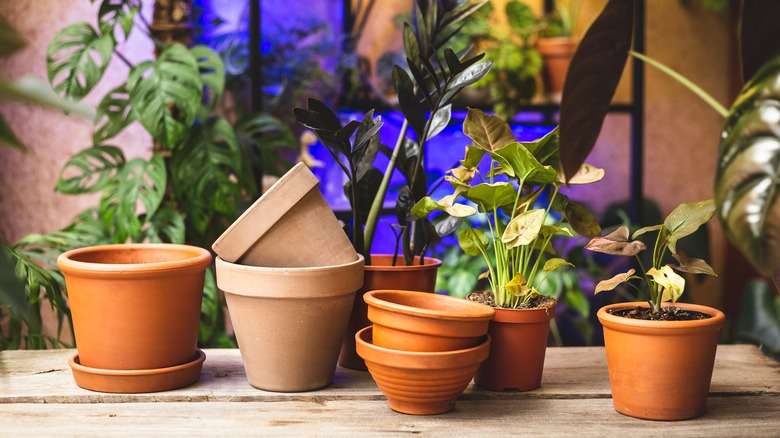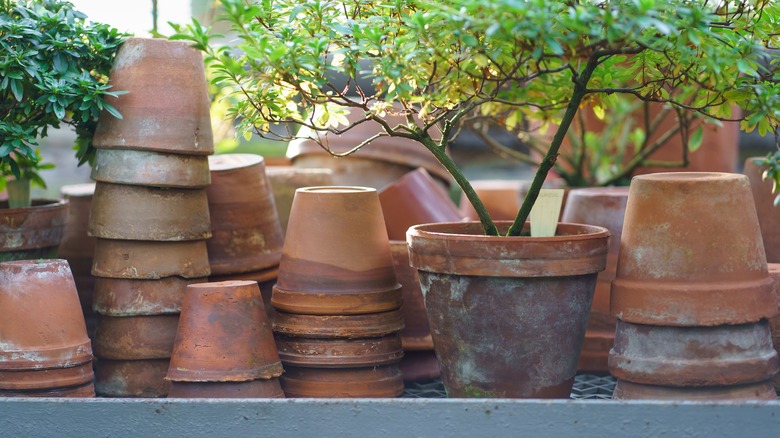Instantly Determine If A Terracotta Pot You're Purchasing Has A Crack With This Simple Trick
There's nothing better than adding a new plant to a pot, but all of that satisfaction can go south if you find out there is a crack in it. Terracotta planters are especially susceptible to cracks, but they're not always visible when you buy them in-store. To ensure you don't bring a compromised planter home, you need to inspect it thoroughly. But since your eyes can't always catch these issues, you must rely on another sense: hearing. Give the pot a light flick and see if you hear it chime. If you don't, then something is wrong with it.
If you plant a flower, herb, or houseplant into a cracked pot, then you're basically throwing your money away. While small fractures might not seem like an issue in the beginning, they almost always tend to grow. This can lead to crumbled lips, large hairline fractures, and eventually broken and chipped terracotta pots. While you might be able to work with a chipped pot here and there, you can't do much with a planter that's split into two pieces. Here's how to avoid creating that scenario.
How to see if a terracotta pot is cracked
When you're shopping for planters in the store, make sure you use your ears in addition to your eyes when looking for any telltale fractures. If it seems like there are no cracks, pick up the pot and bring it close to your ear. Flick the pot with your finger, and listen to hear if it pings. If it doesn't, and instead, you hear a dull thud, that means there is a crack you can't see.
As the Mediterranean gardener points out in his TikTok video, planters are shaped like bells, so much like the instrument, when they're flicked, they carry a clean chime throughout. When the chime is interrupted with a crack, the sound can't reverberate cleanly through the shape, resulting in a broken thud.
For best results, lift the planter if possible. This will allow it to vibrate without any impediments. Hook your finger through the drainage hole, and flick your finger on the lip. This should give you the most accurate reading.
How can there be invisible cracks?
You might be wondering why nurseries and big box stores are selling faulty planters. In truth, it's not their fault. Sometimes these cracks are super minuscule, and they grow with eventual wear and tear. Terracotta planters, in particular, are susceptible to these kinds of cracks. That's because the material they're made from — coarse clay – is super porous and traps water. When they're left in a cold condition — such as outside or in a heavily air-conditioned warehouse — the water freezes and expands. When the planter leaves the cold environment and warms back up, the ice melts and the pot contracts, leading to micro-cracks.
If you end up buying such a planter, chances are it will go through the same process in your home, especially if you put it outside. The constant expansion and contraction will eventually deepen the fracture, leading to an obvious crack. However, you can prevent this scenario from happening with the help of the ping test, leading you to only buy crack-free planters.

